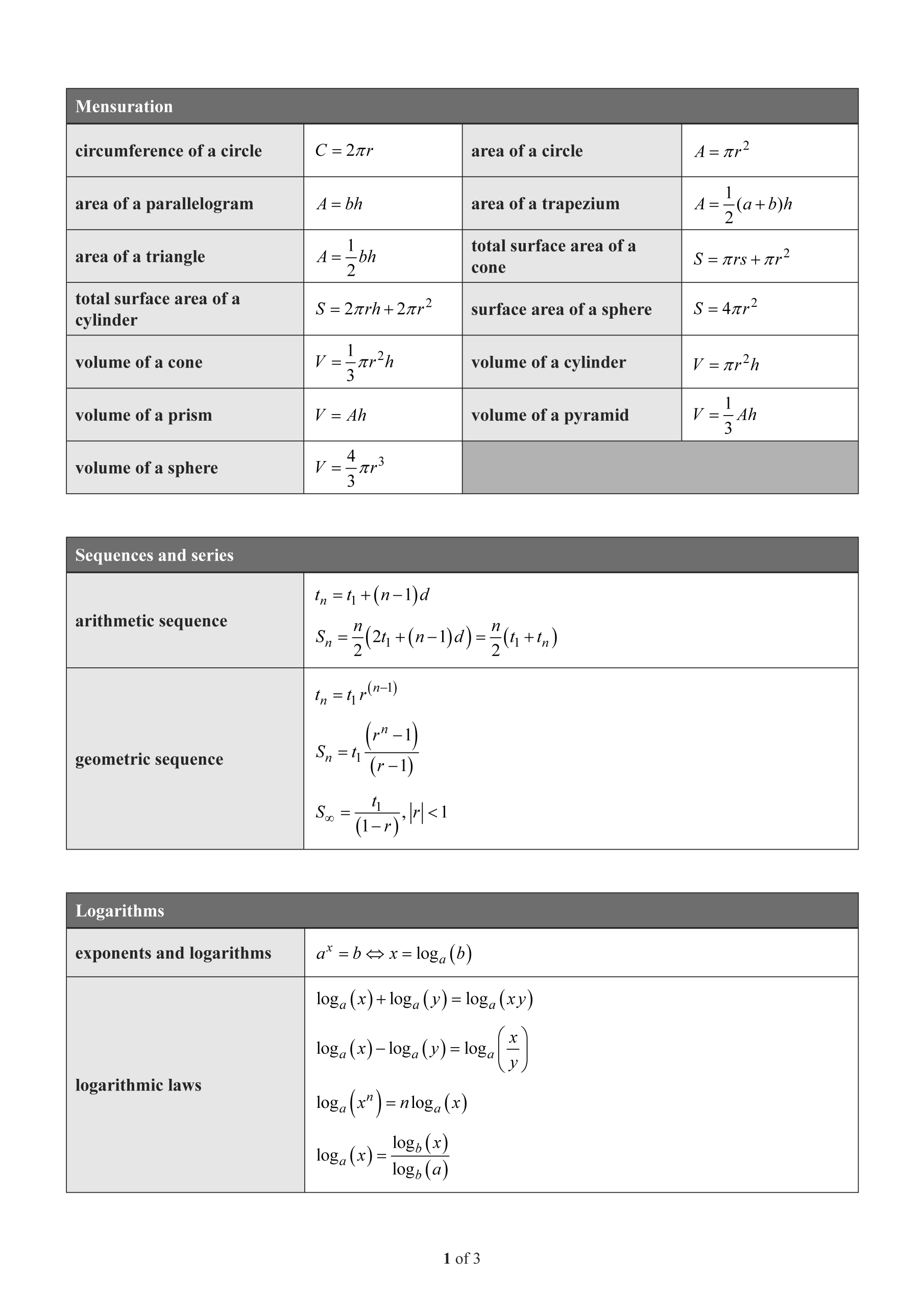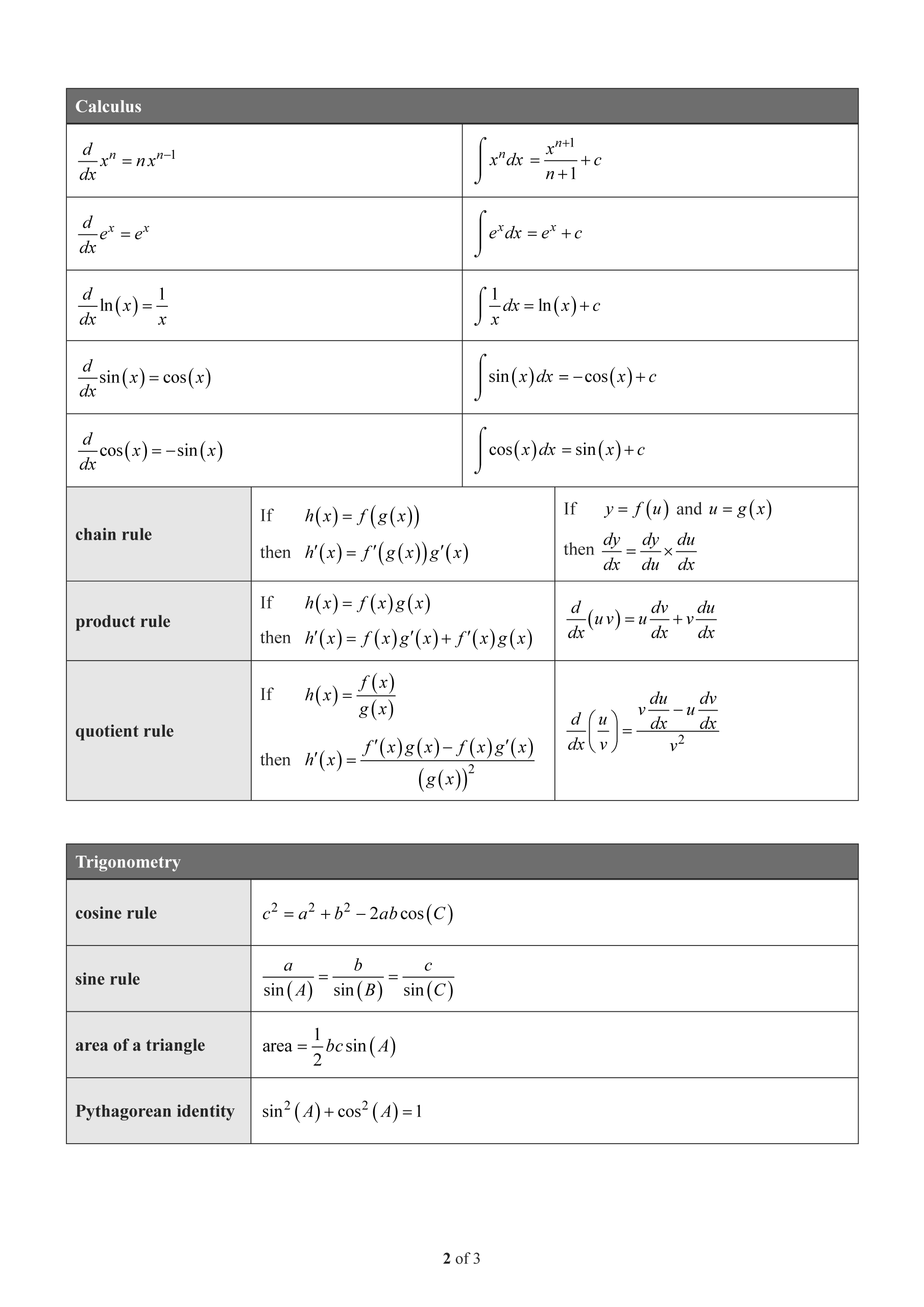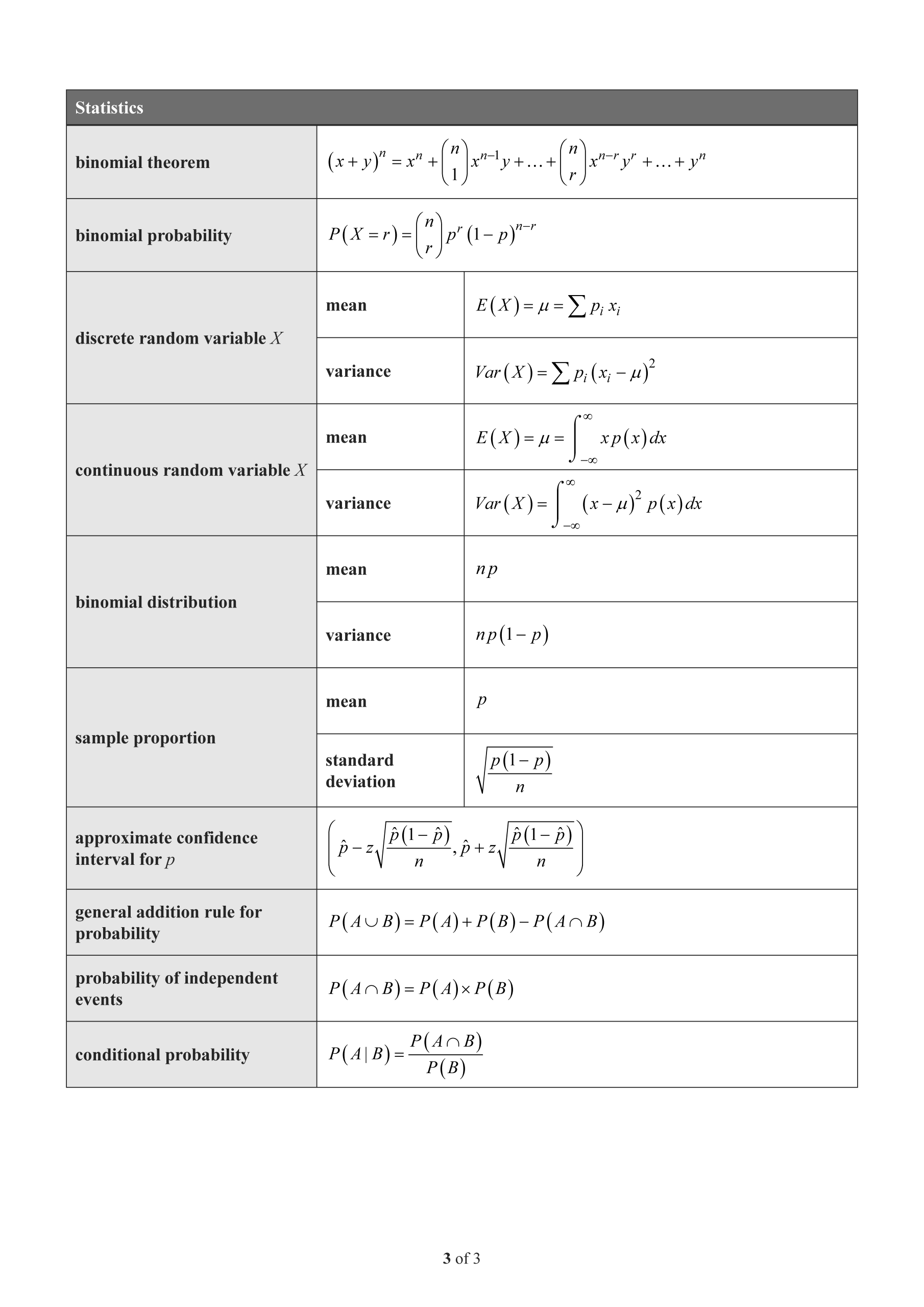QCAA Maths Methods Paper 2 Integral Calculus Mini Test 5
External Assessment Paper 2 — Technology-active
Number of marks: 10
Perusal time: 1 minute
Writing time: 15 minutes
Section 1
Instructions
• This section has 10 questions and is worth 10 marks.
• Use a 2B pencil to fill in the A, B, C or D answer bubble completely.
• Choose the best answer for Questions 1 10.
• If you change your mind or make a mistake, use an eraser to remove your response and fill in the new answer bubble completely.
The velocity (m s\(^{-1}\)) at time \(t\) (s) of an object is given by \(v(t) = 0.4t^2 + 3t\) for \(t \ge 0\). The change in displacement (m) of the object from four to five seconds is
- (A) 15.43
- (B) 21.63
- (C) 32.53
- (D) 54.17
Calculate the total enclosed area between the graph of \(y=x^2-x-6\) and the \(x\)-axis from \(x=1\) to \(x=5\).
- (A) 5.33
- (B) 7.33
- (C) 12.67
- (D) 20.00
The derivative of the function \(f(x)\) is given by \(f'(x) = \sin(2x)\). It is known that \(f\left(\frac{\pi}{2}\right) = 4\). Determine \(f(x)\).
- (A) \(-\cos(2x) + 3\)
- (B) \(\cos(2x) + 5\)
- (C) \(-\frac{1}{2}\cos(2x) + 3.5\)
- (D) \(\frac{1}{2}\cos(2x) + 4.5\)
Section 2
Instructions
• Write using black or blue pen.
• Questions worth more than one mark require mathematical reasoning and/or working to be shown to support answers.
• If you need more space for a response, use the additional pages at the back of this book.
– On the additional pages, write the question number you are responding to.
– Cancel any incorrect response by ruling a single diagonal line through your work.
– Write the page number of your alternative/additional response, i.e. See page …
– If you do not do this, your original response will be marked.
• This section has nine questions and is worth 45 marks.
Consider the following information when completing this question.
The length of a curve \( y = f(x) \) over the interval \( [a,b] \) = \( \int_a^b \sqrt{1 + \left(\frac{dy}{dx}\right)^2} \, dx \)
You are driving along a road with a vertical distance above sea level \(D\) (in metres) given by the function
\[ D(x) = 300 + \ln(x^2 - 3x + e) \]where \(x\) is the horizontal distance from an initial point of measurement (in kilometres) at sea level. Assume that if \(x\) is positive you are east of the initial point of measurement and if \(x\) is negative you are west of the initial point of measurement.
You start your drive along the road at a horizontal distance of 10 kilometres west of the initial point of measurement and drive until you are at a horizontal distance of 10 kilometres east of the initial point.
Determine the time you spend driving downhill, if you drive downhill at an average speed of 40 km/h.
END OF PAPER


